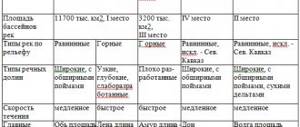By uniting most of Rus' under Moscow, Ivan III created the foundation for an active foreign policy in the 16th century.
The material was prepared jointly with a teacher of the highest category
Alexandrova Ekaterina Valerievna.
Experience as a history and social studies teacher - 11 years.
Russian foreign policy in the first third of the 16th century
In the 16th century, Ivan III continued to unite the Russian lands. During the war with Lithuania (1500-1503), the cities of Bryansk and Chernigov were returned.
Under Vasily III, the son of Ivan III, the unification of Russian lands that were not under Lithuania was completed. Thus, in 1510 Pskov was subjugated, in 1514 Smolensk was recaptured from Lithuania, and in 1521 Ryazan came under the rule of Moscow.
Rice. 1. Portrait of Ivan the Third.
Russian foreign policy in the 16th century (briefly)
Thanks to the desire of Ivan the 3rd to create a unified state, the resources necessary for the active conduct of foreign policy appeared. Since in the end it all came down to the annexation of new lands, it is safe to say that the foreign policy of the state was directly dependent on the domestic one.
After the victory over the Golden Horde, the Russian state began to actively fight the khanates that formed after the collapse of the Horde. The first successful campaign against the Kazan Khanate ended with the acceptance of Moscow's vassalage. However, by the beginning of the 16th century. In connection with the formation of the Turkish Empire, where the Crimean Khanate became a vassal in 1475, Russia's foreign policy situation changed. Türkiye and the Crimean Khanate went against her, wanting to take possession of Kazan. The Kazan Khanate was of considerable importance for Russia: firstly, it was rich in fertile lands and occupied a significant strategic position, and secondly, Kazan was previously one of the cities that carried out destructive raids on Rus'.
The results of the struggle against the Khanate were different. The campaigns against Kazan carried out under Ivan the 4th (from 1547 to 1548 and from 1549 to 1550) failed. However, in 1552 Russian troops took Kazan. In 1556, Russia annexed the Astrakhan Khanate, and the Nogai Horde recognized its vassal independence. In 1557, the main part of Bashkiria was finally annexed.
By the middle of the 16th century. Part of the Volga region and the Urals belonged to the territory of Russia. This contributed to opening the way for further travel to the East. In 1582, Russia began to conquer Siberia. In 1586 the Tyumen fortress was built, and in 1587 - Tobolsk. By the end of the 16th century. The Siberian Khanate was defeated. The multinational character of the state gradually took shape.
Russia also led its military-political development towards the West. In the second half of the 16th century. she began to establish relations with some Western states. Annexing all the East Slavic lands that were previously part of Kievan Rus became the main strategic goal of the rulers of Moscow. But the Livonian Order stood in the way of Russia, blocking access to the Baltic Sea (and, accordingly, to connections with Western Europe).
During the struggle with Lithuania (from 1487 to 1522), Russia was able to take possession of only part of the Chernigov land. Ivan the 3rd managed to defeat the Livonian Order and forced him to pay tribute for the city of Yuryev.
At the end of the 50s. 16th century the western direction becomes the most important in Russian foreign policy thanks to the successes of Ivan the 4th achieved in the East. In 1558, the Livonian War began, the reason for which was the alliance between Lithuania and the Livonian Order against the Russian state, as well as Lithuania’s refusal to pay tribute. Despite Russia's victory over the Livonian Order, Lithuania, Poland and Sweden opposed it. In 1563, Russia took possession of one of the centers of Western Rus' - the city of Polotsk.
Since 1564, luck turned away from Russia. The policy of reforms within the state gave way to bloody oprichnina terror. In 1571, almost all of Moscow was burned by the Crimean Khan Davlet-Girey. By 1577, Russia had captured almost the entire Baltic region, but the country's forces were weakened due to constant wars and conflicts. Since 1578, the troops of the Polish-Lithuanian Commonwealth and Sweden fought against Russia. In 1582, Russia signed a peace agreement with the Polish-Lithuanian Commonwealth, and in 1583 with Sweden.
During the 25-year Livonian War, Russia failed to advance territorially; its conquests in the Baltic states and Belarus were lost. But, despite this, the Russian state from the beginning of its existence showed a desire to expand its borders, continuing its conquests throughout the 16th century. During this time, the territory of Russia almost doubled.
> Share your assignment with us!
DID IT HELP? LIKE!
Like
Foreign policy of Ivan the Terrible
In 1533, the young Tsar Ivan IV the Terrible took the throne. After a series of reforms carried out with the Elected Rada, the time has come for military campaigns. In the east, Russia had three main political opponents. These were fragments of the former empire of Genghis Khan - the Siberian, Kazan and Astrakhan khanates.
In 1547-1548 and 1549-1550, Ivan the Terrible conducted two campaigns against the strongest of the three khanates - Kazan. But the campaigns end in failure. In the second half of the 16th century, Russian foreign policy was more successful. Already in 1552, after a siege and using artillery, Russian troops managed to take Kazan and destroy the Khanate. The conquered territories became part of Russia, and its inhabitants retained many of the orders and laws that reigned under the khans.
TOP 5 articles that are read along with this
- 1. Foreign policy of Ivan 4
- 2. Russian foreign policy
- 3. Foreign policy of Ivan 3
- 4. Russian foreign policy in the 17th century
- 5. Russian foreign policy in the 19th century
In 1556, the Astrakhan Khanate could not resist the Russian troops and became part of the country on the same terms. After negotiations with the Nogai Khanate, in the same year it recognized its vassal dependence on Moscow.
The year 1557 was marked by the annexation of the main part of Bashkiria.
Rice. 2. Ivan the Terrible kills his son.
In general, Russian foreign policy in the 16th century was aimed, for the most part, at solving problems with Tatar raids on border territories. Since the only way to stop the constant raids was the integration of the khanates into Russia, similar campaigns in the Crimea, Central Asia and Siberia would be quite common in the future.
By the middle of the 16th century, Russia controlled most of the Urals and Volga region. In 1582, the conquest of the Siberian Khanate began.
Ivan the Terrible did not plan to conquer Siberia, but the penetration beyond the Urals and the military campaigns of the Cossacks led by Ermak and other Cossack leaders forced the tsar to send streltsy detachments to help the Cossacks.
To fight the Tatars, fortresses are being built in Siberia. The Tyumen fortress was founded in 1586, and Tobolsk in 1587. By the end of the 16th century, the troops of Khan Kuchum were defeated, and the Khanate ceased to exist.
But the war with the Tatars was not always victorious for Russia. So in 1571, the Crimean Tatars under the command of Devlet-Girey made a massive raid on the southern territories and reached Moscow and burned it.
In 1558, Lithuania and the Livonian Order entered into an alliance against Russia, after which Ivan the Terrible declared war on them. Initially, military successes in the Livonian War accompanied Russia. In 1563, Polotsk was occupied, and by 1577, almost the entire Baltic region. But in 1578, Sweden took the side of Livonia and Russia began to suffer defeat. In 1583, the Peace of Yam-Zapolsky was concluded, according to which Russia lost part of its possessions in the Baltic states, and Livonia was absorbed by its allies. The reason for Russia's defeat in the war is also considered to be the oprichnina introduced in the state.
Question. Russian foreign policy in the second half of the 16th century
The foreign policy of Ivan IV was carried out in three directions: in the west - the struggle for access to the Baltic Sea; in the southeast and east - the fight against the Kazan and Astrakhan khanates and the beginning of the development of Siberia; in the south - the protection of Russian lands from the raids of the Crimean Khanate. Tatar khans carried out predatory raids on Russian lands. In the territories of the Kazan and Astrakhan khanates, there were thousands of Russian people captured during raids. The local population - Chuvash, Mari, Udmurts, Mordovians, Tatars, Bashkirs - was brutally exploited. The Volga route ran through the territories of the khanates, but the Volga could not be used by Russian people along its entire length. Russian landowners were also attracted to the fertile, sparsely populated lands of these regions.
First, Ivan the Terrible took diplomatic steps aimed at subjugating the Kazan Khanate, but they did not bring success. In 1552, the 100,000-strong army of the Russian Tsar besieged Kazan. It was better armed than the Tatar one. Ivan IV's artillery had 150 large cannons. Using a tunnel and barrels of gunpowder, the Russians blew up the walls of Kazan. The Kazan Khanate admitted itself defeated. The peoples of the Middle Volga region became part of the Russian state. In 1556, Ivan the Terrible conquered the Astrakhan Khanate. From this period, the entire Volga region was Russian territory. The free Volga trade route significantly improved the terms of trade with the East.
In the middle of the 16th century. Russia included Bashkiria, Chuvashia, and Kabarda. The annexation of the Kazan and Astrakhan khanates opened up new prospects, and access to the basins of the great Siberian rivers became possible. The Siberian Khan Ediger recognized vassal dependence on Moscow back in 1556, but Khan Kuchum, who replaced him (? - ca. 1598), refused to recognize the power of Moscow (he oppressed local residents, killed the Russian ambassador).
The Stroganov merchants, who had a letter from the tsar granting lands east of the Urals, with the permission of Moscow, hired a large detachment of Cossacks to fight Khan Kuchum. The leader of the detachment was the Cossack ataman Ermak (? -1585). In 1581, Ermak’s detachment defeated Kuchum’s troops, and a year later occupied the capital of the Siberian Khanate, Kashlyk.
Kuchum was finally defeated in 1598, and Western Siberia was annexed to the Russian state. All-Russian laws were adopted in the annexed territories. The development of Siberia by Russian industrialists, peasants and artisans began.
Russia's foreign policy actions in the West are the struggle for access to the Baltic Sea, for the Baltic lands captured by the Livonian Order. Many Baltic lands have long belonged to Novgorod Rus'. The banks of the Neva River and the Gulf of Finland used to be part of the lands of Veliky Novgorod. In 1558, Russian troops moved to the West, and the Livonian War began, which lasted until 1583. The rulers of the Livonian Order interfered with the ties of the Russian state with Western European countries.
The Livonian War is divided into three stages: until 1561 - Russian troops completed the defeat of the Livonian Order, took Narva, Tartu (Dorpat), approached Tallinn (Revel) and Riga; until 1578 - the war with Livonia turned for Russia into a war against Poland, Lithuania, Sweden, and Denmark. The hostilities became protracted. Russian troops fought with varying success, occupying a number of Baltic fortresses in the summer of 1577.
The situation was complicated by the weakening of the country's economy as a result of the devastation by the guardsmen. The attitude of the local population towards Russian troops changed as a result of military extortions.
During this period, Prince Kurbsky, one of the most prominent Russian military leaders, who also knew the military plans of Ivan the Terrible, went over to the enemy’s side. The situation was complicated by the devastating raids on Russian lands by the Crimean Tatars.
In 1569, Poland and Lithuania were united into a single state - the Polish-Lithuanian Commonwealth. Stefan Batory (1533-1586), elected to the throne, went on the offensive; Since 1579, Russian troops fought defensive battles. In 1579 Polotsk was taken, in 1581 Velikiye Luki was taken, the Poles besieged Pskov. The heroic defense of Pskov began (it was headed by governor I.P. Shuisky}, which lasted five months. The courage of the city’s defenders prompted Stefan Batory to abandon further siege.
However, the Livonian War ended with the signing of the Yam-Zapolsky (with Poland) and Plyussky (with Sweden) truces, which were unfavorable for Russia. The Russians had to abandon the conquered lands and cities. The Baltic lands were captured by Poland and Sweden. The war exhausted Russia's strength. The main task of conquering access to the Baltic Sea was not solved.
Russian politics at the turn of the 16th-17th centuries
After the death of Ivan IV, his son Fedor ascended the throne. During the Russian-Swedish war of 1590-1595, he managed to regain the territories of the southern coast of the Gulf of Finland lost by his father. After the death of Fedor, the Rurik dynasty came to an end and Russia plunged into the Troubles.
Rice. 3. Map of Russia at the end of the 16th century.






